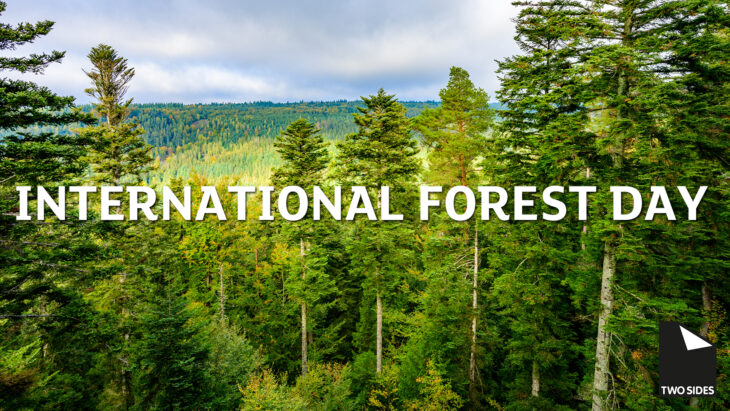Latest News

Sunday 21st March celebrated International Day of Forests, a day to celebrate and raise awareness of the importance of all types of trees and forests in all countries.
Set up by the United Nations National Assembly in 2012, the International Day of Forests encourages countries to organise local and national projects, debates and activities that promote the benefits of forestry, as well as increasing the amount of trees with replanting schemes. This year the theme is ‘Forest restoration: a path to recovery and well-being’, which highlights the vital role forests not only play in combating climate change, but in the lives of local communities.
Covering over a third of the world’s land mass, it’s estimated that around 1.6 billion people, including more than 2,000 indigenous cultures, depend on forests for their livelihoods, medicines, fuel, food and shelter. Any decrease in forestry has an alarming effect on the people living in and around them, and forests are crucial in alleviating poverty and achieving the UN’s Sustainable Development Goals.
“Forests are home to about 80% of all terrestrial wildlife,” said UN Secretary-General António Guterres. “They also help regulate the climate and support the livelihoods of hundreds of millions of people.”
The Remarkable Rise of Forests
Alongside the prevention of deforestation for agriculture and the preservation of ancient woodland, another factor that’s critical to the survival of forests is paper production. While some may argue that the use of wood pulp in the papermaking process reduces the amount of forestry, the truth is that the paper industry is central to the continual growth of forests.
It’s an often quoted fact, but it bears repeating: Between 2005 and 2020, European forests grew by 58,390km2. That’s an area larger than Switzerland and equivalent to 1,500 football pitches of forest growth every day.¹ This stunning growth has been achieved through ‘afforestation’, the planting of trees on new land without previous tree cover, and the natural expansion of existing forests on areas such as abandoned land.²
The result is a remarkable expansion of forestry in Europe, forestry that plays a vital role in carbon capture and combating climate change, as well as providing a well-managed home for thousands of different animal and tree species. In addition, these areas of forest provide buffers for more vulnerable forestry, protecting them from illegal logging and conversion to farmland.
Sustainability Heroes
The paper industry prides itself on the health of its forests and the high quality of their management. In Europe, 74% of wood and 90% of pulp purchased by the European pulp and paper industry is FSC or PEFC certified. Both schemes certify the forests to credible, independently verified standards of responsible forest management, conserving the natural habitats of plants and animals, and respecting the rights of forestry workers and local communities.
It’s this standard of care and responsibility that has made paper manufacture one of the most sustainable industries in the world. And with its success comes a multitude of benefits for biodiversity and the climate, as well as the livelihoods and wellbeing of the people that work in forests and the people that simply enjoy them.
So find a local forest, have a walk around, and take in the splendour of one of our finest assets.





